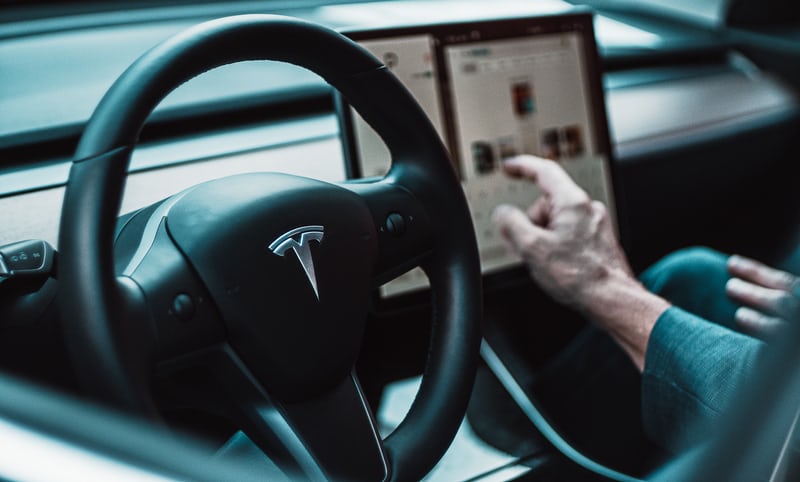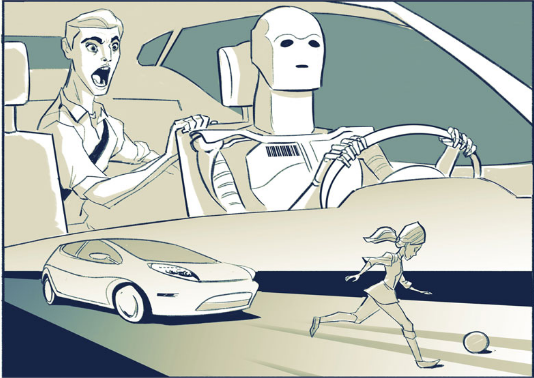5/5 (2) Autonomous driving is currently one of the hottest topics in the field of artificial intelligence. However, a much less talked-about mode of transportation that could also become autonomous in the future is flying. The airline industry is known for its low profit margins, and in 2012 airlines made an average of $4 per passenger carried. It thus makes sense that airlines always try to find ways to cut costs and one of the ways to do that is by cutting the number of crew members per flight. The number of crew members in the cockpit has already declined over the years, but will we soon see commercial airplanes without a cockpit at all?
During the 1950s, when commercial flying began to grow rapidly, there were five crew members in the cockpit: a pilot, a co-pilot, a flight engineer, a navigator and a radio operator. As technology improved, the tasks of the navigator, the radio operator and the flight engineer were replaced by computers. And with the introduction of the autopilot, constant hands-on control by a human was not necessary anymore. It is however important to note that the autopilot cannot replace human operators, as it merely assists them in controlling the aircraft. The pilot and co-pilot have to constantly monitor and adjust the aircraft’s navigation and systems, communicate with air traffic control and prepare for the next phase of the flight.
Tests have been done to reduce the number of pilots from two to one, but this reduction is not expected to come in the very near future. If the reduction from two to one is already such a difficult task, how likely would it be to go from two pilots to no pilots at all? Last June, Mike Sinnett, Boeing’s vice president of product development, announced that Boeing wants to test aspects of self-flying passenger aircrafts next year. He also stated that the basic building blocks of the technology are already available. These are however only tests on the aspects of self-flying aircrafts and an aeronautics professor at the Embry-Riddle Aeronautical University in Florida says that even optimists predict that pilotless flying is at least 50 years away from now.
However, even if autonomous flying would be possible, it would be difficult to convince people to actually fly with an autonomous aircraft. A survey of 8.000 people done by UBS found that only 17% of respondents would buy a ticket for a pilotless flight. Nevertheless, I think that this percentage could rise with the commercialization of autonomous transportation for other modes of transport. For many people, autonomous transportation still sounds like something from movies, but if there are more and more autonomous cars on the road, the consensus on autonomous transportation including autonomous flying could drastically change. Even though it seems likely that we will not see any pilotless commercial flights in the next 50 years, I am wondering what your current thoughts are on getting on a pilotless flight. Do you feel safer on a flight knowing that there are human operators on board or do you think taking out the human error factor makes flying safer?
[1] – IATA. (2013, March). Strong Passenger Growth Trend Continues. Opgehaald van IATA: http://www.iata.org/pressroom/pr/Pages/2013-07-03-01.aspx
[2] – Kottasová, I. (2017, August). Pilotless planes could save airlines billions. But would anyone fly? Opgehaald van CNN: http://money.cnn.com/2017/08/07/technology/business/pilotless-planes-passengers/index.html
[3] – Lerner, P. (2017, August). Would You Fly on an Airliner Without a Pilot? Opgehaald van Air & Space Magazine: http://www.airspacemag.com/flight-today/02_aug2017-airplanes-without-pilots-180963931/
[4] – Scott, A. (2017, June). Boeing wants to build a futuristic plane that can fly without a pilot. Opgehaald van Business Insider: http://www.businessinsider.com/r-boeing-studies-pilotless-planes-as-it-ponders-next-jetliner-2017-6?international=true&r=US&IR=T







